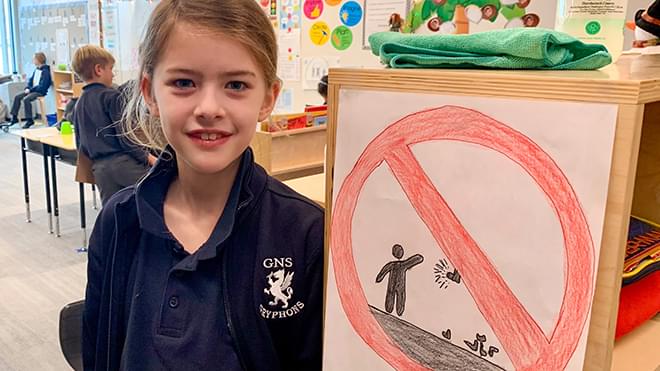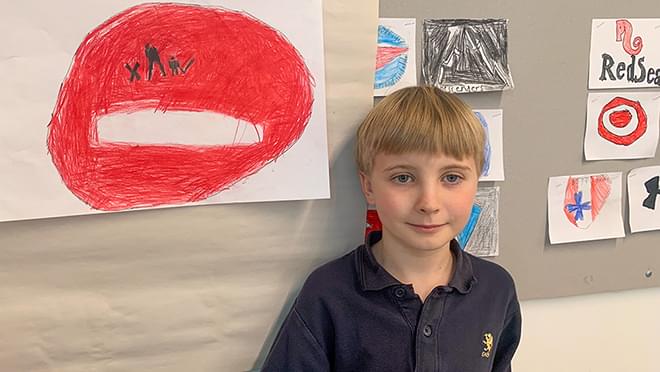In a recent IB PYP Unit of Inquiry, ‘How We Express Ourselves,’ third-grade students delved into the world of signs and symbols and how they facilitate local and global communication. The students not only learned about the features of various signs but also actively participated in creating their own, emphasizing the vital role signs play in conveying clear messages across diverse cultures.
Simone, a Grade 3 student, emphasized how important it is that symbols are clear and simple, noting that signs with words may not always be the most effective way to communicate an important message, especially in multilingual contexts.

“We’re learning about different features of signs, for instance, a red circle with a diagonal line through it pretty much always means ‘do not.’ A triangle, like a rhombus shape that is yellow, is watch out, like, watch out there are ducks crossing,” she said.
Simone provided an example of a potentially dangerous situation where a sign written only in French and English might leave a German speaker confused. The universal nature of symbols, she said, helps people understand each other by transcending language barriers.
Simone’s drawing showed a pile of socks already on the ground, and one in mid-air with the same fate as the other socks. Around those socks is a red circle with a diagonal line, symbolizing that one should indeed, not be tossing their socks on the ground.
Mrs. Palm, Grade 3 teacher, said that signs are an exchange of information, allowing individuals to express their needs and provide directions. The classroom experience included the creation of a sign dictionary and categorization of signs, enabling the students to appreciate the diversity of symbols that guide our daily lives.
“This is the students’ summative project and they were required to create their own original sign and they’re taking into consideration the effective features of a sign which are the shape, colours and simplicity of the symbols,” said Mrs. Palm.
The process involved brainstorming existing signs, categorizing them and then using this knowledge to craft unique symbols. Ms. Palm noted the tangibility of symbols and their connection to student experiences. The tangible nature of signs, visible in everyday life, enhances student engagement and understanding of their significance.
Grade 3 student Jacob explained that signs serve as a substitute for constant verbal communication, preventing chaos by providing clear rules and directions in the world.

“If you didn’t have signs, you’d have to have someone tell you the rules and then you would forget them. Or you might need to have somebody at each stop sign or something,” he said.
Jacob’s personal drawing depicted a sign prohibiting grown-ups in the area. He drew a large person and small person within the classic ‘do not’ symbol. His project showcases his understanding of signs as tools for organizing spaces and activities.
From safety instructions to directional guidance, signs are universal tools that bridge gaps and ensure a harmonious coexistence. As the students demonstrated their creativity in designing signs, they gained a deeper appreciation for the power of symbols in conveying messages and maintaining order in society.
Megan Atkins-Baker is one of our Communications and Digital Media Coordinators.





